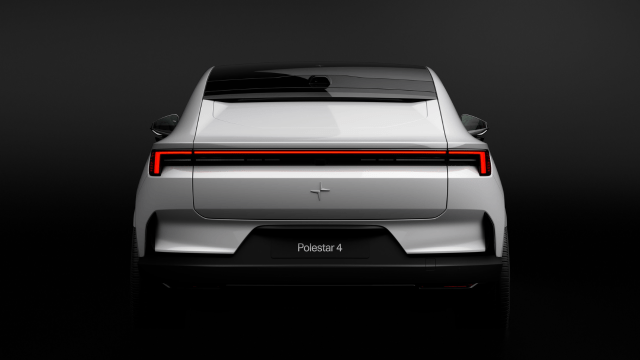Here at Gizmodo Australia, we love tech. It solves a lot of problems and brings us a lot of joy. However, tech doesn’t solve every problem, and when it’s introduced in lieu of perfectly good things, it has the potential to cause problems. Such is the case with the Polestar 4 and its missing rear window.
I love Polestar. The Polestar 2 was our favourite electric vehicle of 2022, and at every step of the way, we’ve appreciated the company’s efforts to be sustainable. I wish the company was working on a cheaper electric vehicle instead of ones above the luxury car tax (such as the Polestar 3 and 4), but the company is a considerable alternative to Tesla, no doubt.

But with the reveal of the Polestar 4, I feel like we’re beyond improving the wheel and into the realm of replacing it.
The Polestar 4 doesn’t include a rear window. There just isn’t one. Instead of a rear window, the car has a rear camera, which feeds through to a display in lieu of the window.
wired broke embargo and posted pics of the polestar 4 and…it doesnt have a rear window. it has a camera that displays the rear view
seems…premature and dangerous! pic.twitter.com/tXbljQHJaF
— Luke Plunkett (@LukePlunkett) April 17, 2023
“Thanks to the elimination of the rear window, the glass roof stretches beyond the rear occupants’ heads, creating a truly unique interior ambience,” Polestar said in an announcement.
“The rear-view mirror is replaced by a high-definition screen that shows a real-time feed from a roof-mounted rear camera – enabling a far wider field of view than what can be experienced in most modern cars.”
This sucks, and although I’m willing to have my mind changed, we need to talk about the safety concerns involved.
See, this is part of the latest trend with cars. I’ve written about it before, but to reiterate, there’s been a noticeable trend in cars moving from performance-based design and towards experience-based design. This has informed a more luxurious and less rev-headed approach to car aesthetics and features, but also explains the introduction of several tech elements in cars.
Take infotainment systems, for example, that include less tactile buttons these days, while including larger screens. Tactile responses give you an affirmative, physical confirmation when you trigger them, giving you confidence when you press a button while you’re focused on the road. They’re also more accommodating for our fingers, which are clumsy, finicky things, and less reliant on precision. These things are not offered by touch screens, but the benefit of a touch screen is easy-to-use UI (though this varies from model to model and isn’t particularly important to many drivers).

Now, consider side cameras instead of side mirrors. With the cameras feeding through to displays located either on the inside of the car near the camera, or feeding through to the infotainment system, these are not necessary – but certainly make a car feel more premium. More detail can be offered in some circumstances, such as in dark environments, and cameras can provide a wider field of view, however, the displayed footage can be blurry and grainy in the wrong conditions (all valid points pointed out by ArenaEV). Ultimately as well, it adds another point of failure to a car, replacing what is otherwise a perfectly fine (and typically easily repaired) feature.

Now we have the replacement of a rear window with a camera. To be fair, this is not a new thing. Many sports cars and super cars (especially from McLaren) have been produced with the omission of a rear window, but these are showboats built to impress. Polestar, though still a luxury brand, brings the trend to a more affordable car, and is indicative that the removal of rear windows could be coming to cheaper vehicles.
But it really shouldn’t be – or at the very least, the option to replace the rear window with a camera should be left up to the customer.
Just like with side cameras replacing side mirrors, the replacement of a rear window with a camera adds another point of failure. Rear vision could be obscured easily through the covering of the small camera lens on the back, and the camera footage fed through to the in-car display could vary in quality depending on the conditions.
Moreover, any potential issues with rear vision are no longer simply physical issues – they must also now be software issues. Where in the past cracked or warped glass could be (although not always cheaply) repaired or replaced, a replacement camera may not be such an easy (or cheap) fix.
Additionally, we’re talking about an SUV here – a large class of vehicle that dominates global car sales. Thinking of this, my mind is cast to the Tesla Model Y – a big SUV with a crappy rear window (though at least it has one).
The bottom line is simple. Tech should exist to assist us in our day-to-day lives – it shouldn’t exist to replace things that function well enough on their own.
A reversing camera, for example, is a terrific assistance feature – as is lane assistance and parking assistance camera technology.
But removing the entire rear window from the Polestar 4? Let’s just not.
The Polestar 4 will be available in Australia in 2024, and will start at $90,000, with a range expectation of 600km WLTP.
